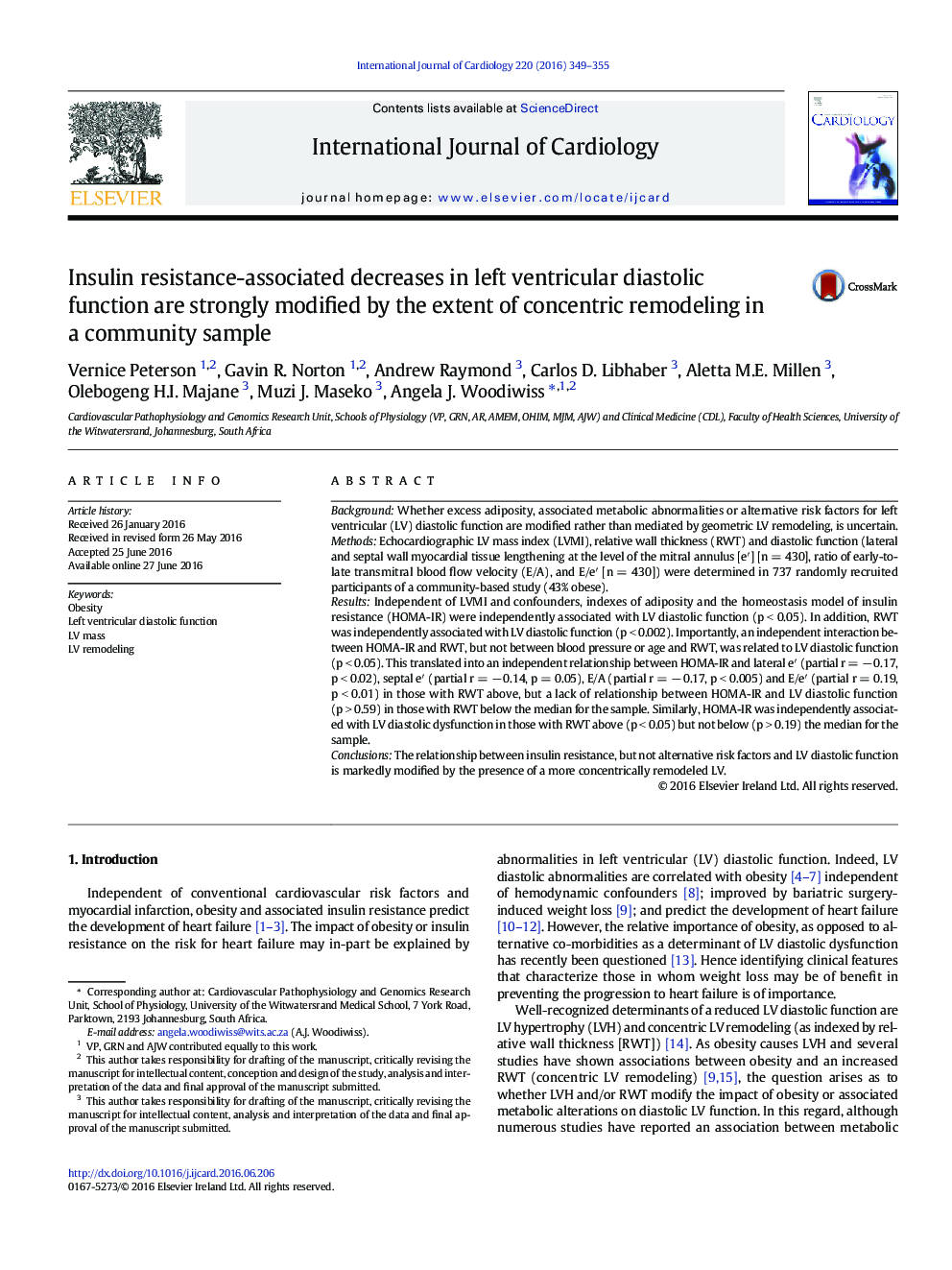| Article ID | Journal | Published Year | Pages | File Type |
|---|---|---|---|---|
| 5963500 | International Journal of Cardiology | 2016 | 7 Pages |
BackgroundWhether excess adiposity, associated metabolic abnormalities or alternative risk factors for left ventricular (LV) diastolic function are modified rather than mediated by geometric LV remodeling, is uncertain.MethodsEchocardiographic LV mass index (LVMI), relative wall thickness (RWT) and diastolic function (lateral and septal wall myocardial tissue lengthening at the level of the mitral annulus [eâ²] [n = 430], ratio of early-to-late transmitral blood flow velocity (E/A), and E/eâ² [n = 430]) were determined in 737 randomly recruited participants of a community-based study (43% obese).ResultsIndependent of LVMI and confounders, indexes of adiposity and the homeostasis model of insulin resistance (HOMA-IR) were independently associated with LV diastolic function (p < 0.05). In addition, RWT was independently associated with LV diastolic function (p < 0.002). Importantly, an independent interaction between HOMA-IR and RWT, but not between blood pressure or age and RWT, was related to LV diastolic function (p < 0.05). This translated into an independent relationship between HOMA-IR and lateral eâ² (partial r = â 0.17, p < 0.02), septal eâ² (partial r = â 0.14, p = 0.05), E/A (partial r = â 0.17, p < 0.005) and E/eâ² (partial r = 0.19, p < 0.01) in those with RWT above, but a lack of relationship between HOMA-IR and LV diastolic function (p > 0.59) in those with RWT below the median for the sample. Similarly, HOMA-IR was independently associated with LV diastolic dysfunction in those with RWT above (p < 0.05) but not below (p > 0.19) the median for the sample.ConclusionsThe relationship between insulin resistance, but not alternative risk factors and LV diastolic function is markedly modified by the presence of a more concentrically remodeled LV.
